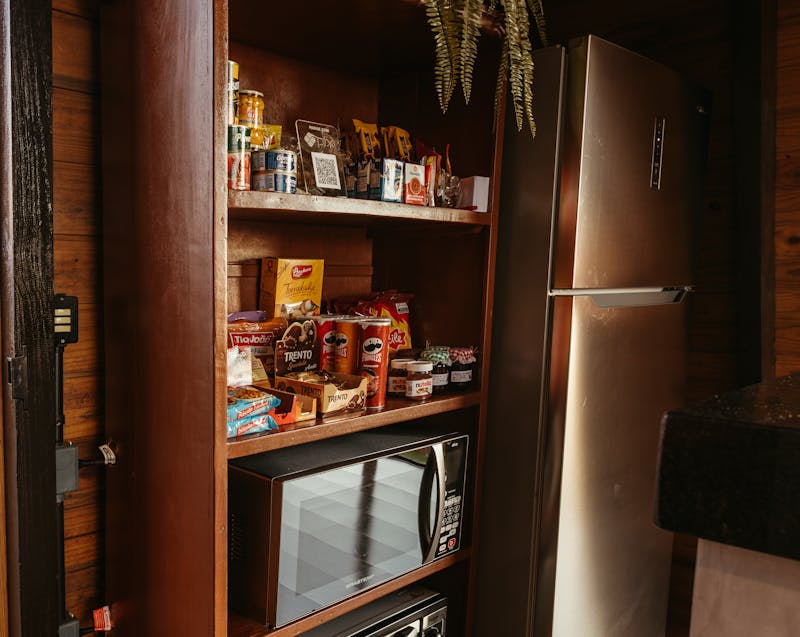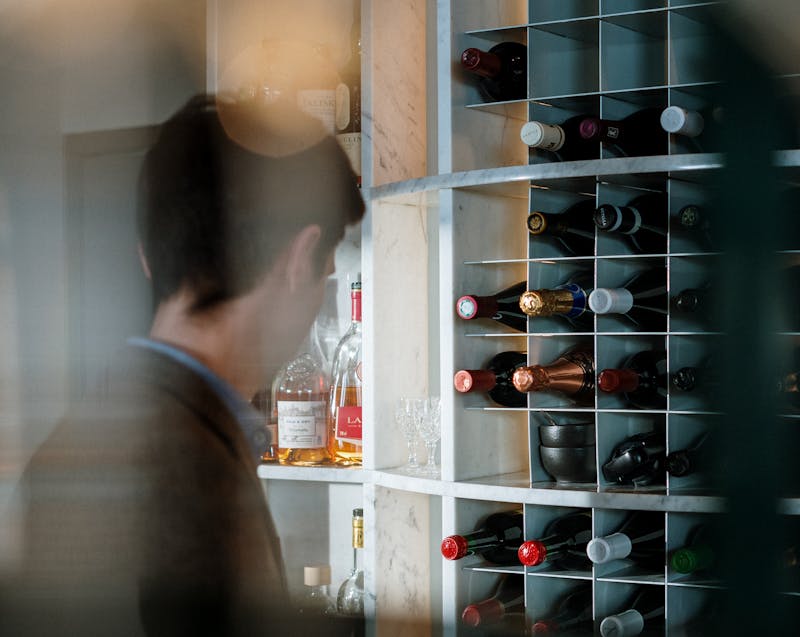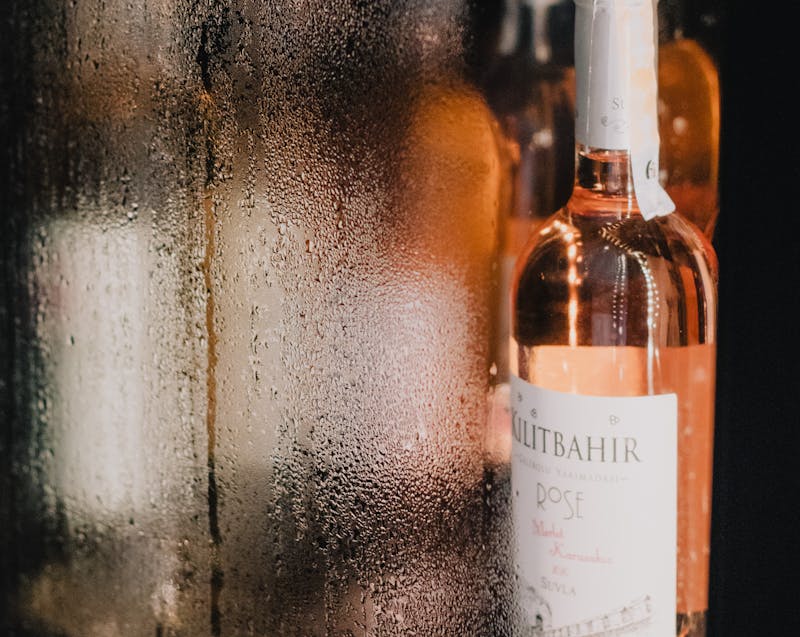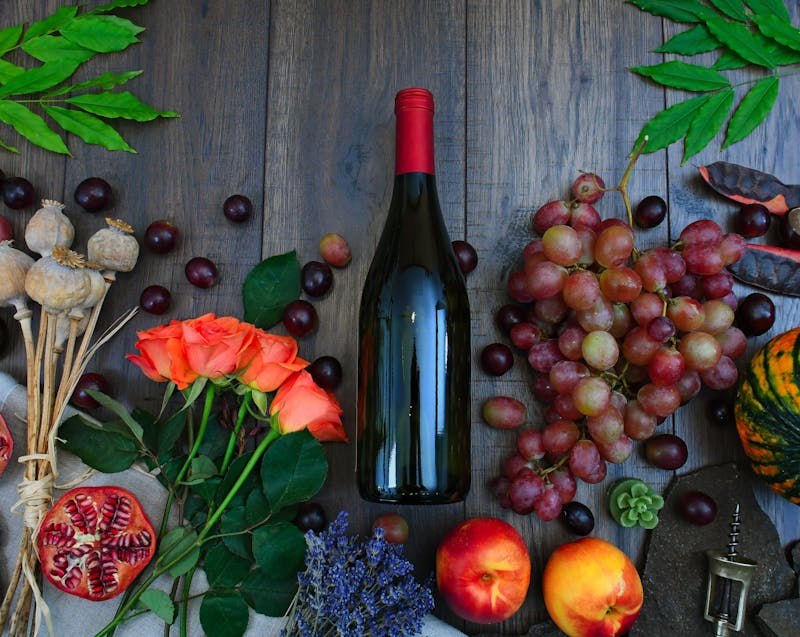
- Wine can go bad if exposed to heat, light, or fluctuating temperatures—consistent storage conditions are essential.
- The fridge is best for short-term storage of opened whites, rosés, and sparkling wines (up to 5 days).
- Pantries can work for unopened bottles if they remain cool, dark, and stable year-round.
- Avoid keeping wine in the fridge long-term, as dry air can shrink corks and cause oxidation.
- Store corked bottles horizontally to keep the cork moist and prevent air leaks.
- A dedicated wine cooler offers the best environment for long-term storage of all wine types.
- Proper storage not only prevents spoilage but also preserves wine’s flavor and aroma over time.
Proper wine storage is a delicate art that every homeowner and wine connoisseur should master. Whether you enjoy the occasional glass or have a growing collection, understanding how temperature, light, and humidity affect your wine can make the difference between a delightful pour and a disappointing sip. One of the most common questions people ask is, “Does wine go bad in the fridge or pantry?” The answer depends on the type of wine, how it’s stored, and how long it has been sitting there.
Let’s explore what really happens when wine is kept in different environments and how you can preserve its quality and taste for as long as possible.
Does Wine Go Bad in the Fridge? Understanding the Science Behind It
Refrigeration is often the go-to method for keeping food and drinks fresh—but when it comes to wine, the situation is a bit more complex. The cool temperature of the refrigerator (usually between 35°F and 40°F) slows down the chemical reactions that cause wine to spoil. This makes it ideal for storing opened bottles of white, rosé, and sparkling wine for a few days. However, prolonged exposure to such low temperatures can dull the flavors of wine, particularly reds, which prefer slightly warmer environments.
Wine’s biggest enemies are oxygen, light, and fluctuating temperatures. When stored in the fridge, wine is safe from light and heat, but the dry environment can cause corks to shrink over time, allowing air to seep in and oxidize the wine. This is why unopened bottles should not be kept in the refrigerator for long periods.
Quick fridge storage tips:
- Keep opened bottles sealed with a vacuum stopper or an airtight cork.
- Store upright to minimize oxidation.
- Limit fridge storage for opened bottles to 3–5 days (for whites and rosés) or 1–3 days (for reds).
- Avoid long-term refrigeration for unopened bottles—opt for a wine cooler instead.
Does Wine Go Bad in the Pantry? Exploring Room Temperature Storage

Pantries are convenient for storing dry goods, but they may not always offer the best conditions for wine. The average pantry temperature can fluctuate between 60°F and 80°F, depending on the season, which can cause the wine to age prematurely or spoil faster. Consistent temperatures around 55°F are ideal for wine preservation, so a pantry that remains cool and dark year-round can still be a good choice.
Unlike the refrigerator, the pantry is less likely to dry out corks, but exposure to heat, light, or humidity can quickly ruin a good bottle. Red wines can tolerate slightly warmer conditions better than whites, but both should be stored away from direct sunlight and temperature changes.
Best practices for pantry storage:
- Store bottles on their sides if they’re corked to keep the cork moist.
- Choose a dark, cool, and stable area away from kitchen appliances.
- Avoid placing wine near heat sources like ovens, stoves, or windows.
- Keep humidity moderate (around 60–70%) to prevent corks from drying out.
If your pantry temperature tends to rise during summer, consider investing in a small wine fridge. This appliance maintains the perfect temperature and humidity for both short-term and long-term storage.
Does Wine Go Bad in the Fridge or Pantry? Finding the Right Balance
The answer depends on your storage goals and wine type. For short-term storage, the fridge is best for open bottles and lighter wines. For long-term preservation, a cool, dark pantry or a dedicated wine cooler works better. The key is consistency—wines deteriorate faster when exposed to temperature swings or light.
Here’s a quick comparison:
| Storage Area | Ideal For | Common Risks | Duration |
| Fridge | Opened whites, rosés, sparkling wines | Dry corks, flavor dullness | 3–5 days |
| Pantry | Unopened reds and whites | Heat exposure, light damage | Weeks to months |
| Wine Cooler | All wine types | Minimal risk | Months to years |
For homeowners who make or store homemade wine, it’s also essential to understand how to balance fermentation and aging. If you’re exploring how to make wine at home, knowing proper storage techniques can significantly influence its taste and longevity.
Practical Tips to Keep Your Wine Fresh Longer
No matter where you store your wine, following a few simple guidelines can ensure every glass tastes as the winemaker intended:
- Avoid temperature fluctuations. Keep the wine at a steady temperature between 50°F and 60°F.
- Limit light exposure. Ultraviolet rays can cause wine to age prematurely.
- Use proper stoppers. Airtight or vacuum stoppers reduce oxygen exposure.
- Keep bottles still. Vibrations can disturb sediments and alter flavor.
- Store horizontally (for corked bottles). This keeps the cork moist and prevents air from entering.
If you regularly buy wine, consider investing in a wine rack or cooler designed to maintain ideal conditions. This small upgrade can make a big difference, particularly for expensive or vintage wines.

Final Thoughts: Protect Your Investment and Enjoy Every Sip
Wine is a living beverage that evolves over time. Whether it’s stored in the fridge or the pantry, maintaining the right conditions ensures that it matures gracefully rather than spoils prematurely. For short-term enjoyment, the refrigerator is a great option—especially for open bottles and whites. For long-term storage, a temperature-controlled environment like a wine cooler or a consistently cool pantry is ideal.
As both homeowners and wine lovers, protecting your collection is about more than preservation—it’s about experience. A well-stored bottle promises that each pour will be as flavorful and aromatic as the day it was sealed.
Share This :

